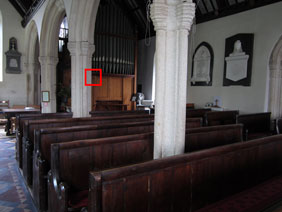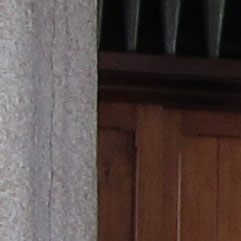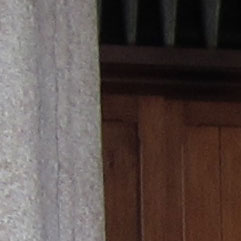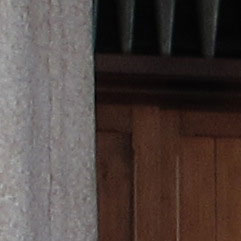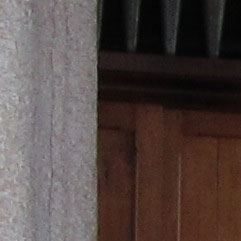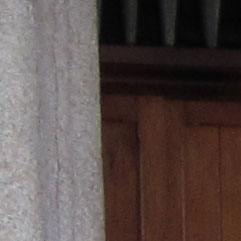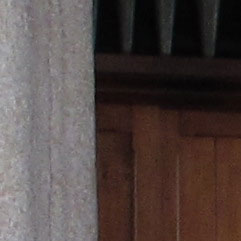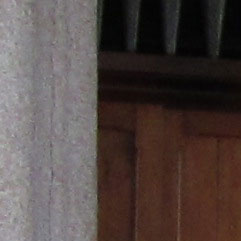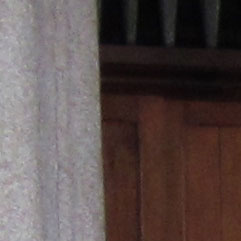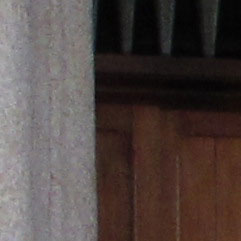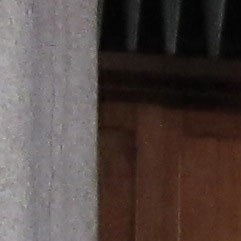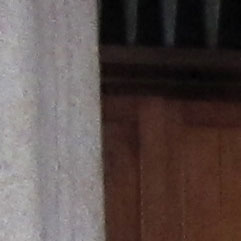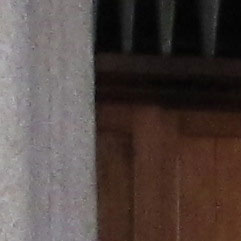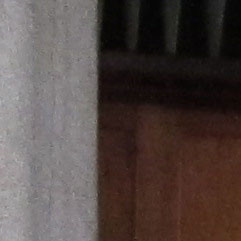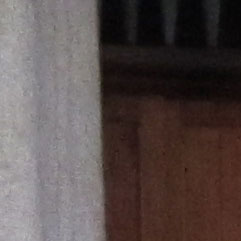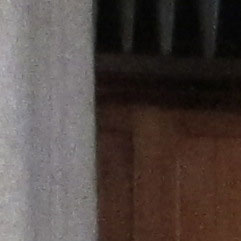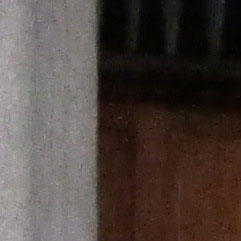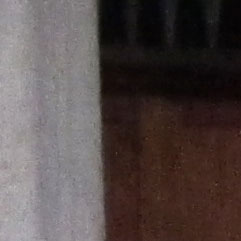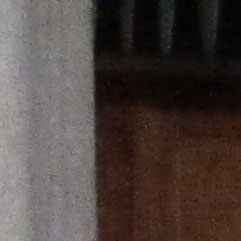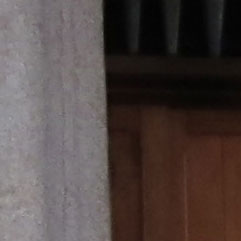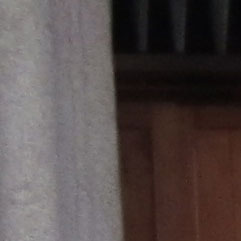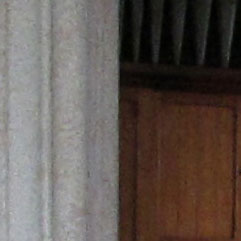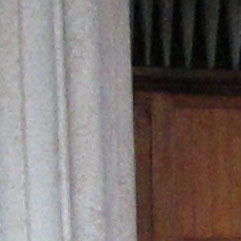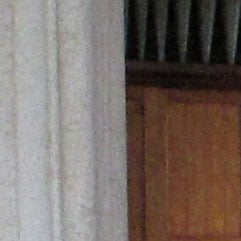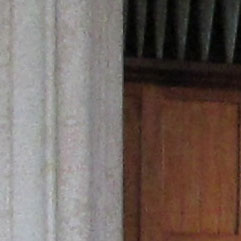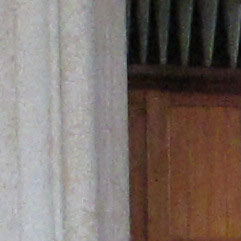Canon ELPH 100 HS / IXUS 115 HS
-
-
Written by Gordon Laing
Quality
Canon ELPH 100 HS / IXUS 115 HS vs ELPH 300 HS / IXUS 220 HS vs ELPH 310 HS / IXUS 230 HS Quality
|
ELPH 100 HS / IXUS 115 HS |
ELPH 300 HS / IXUS 220 HS |
ELPH 310 HS / IXUS 230 HS | ||
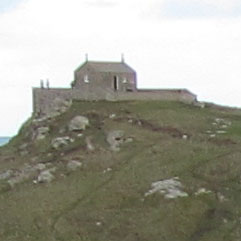 | 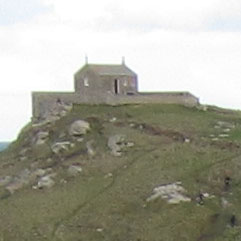 | 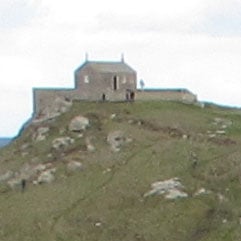 | ||
f2.8, 100 ISO |
f3.2, 100 ISO |
f3, 100 ISO | ||
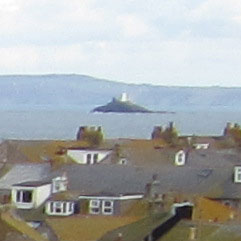 | 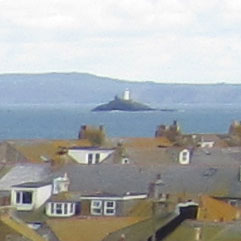 | 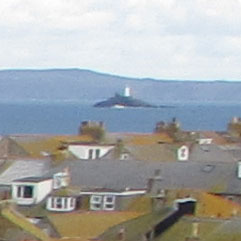 | ||
f2.8, 100 ISO |
f3.2, 100 ISO |
f3, 100 ISO | ||
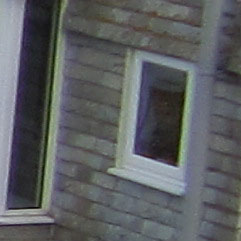 | 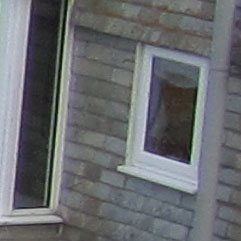 | 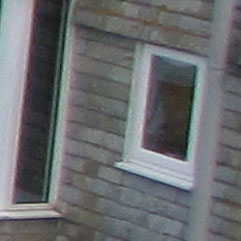 | ||
f2.8, 100 ISO |
f3.2, 100 ISO |
f3, 100 ISO | ||
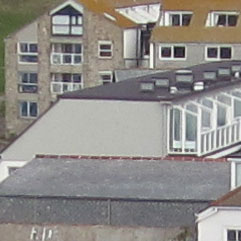 | 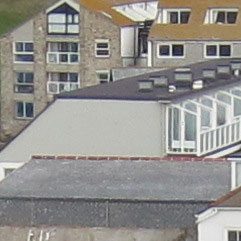 | 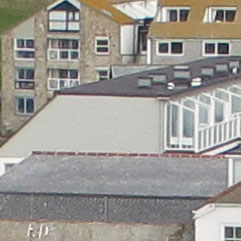 | ||
f2.8, 100 ISO |
f3.2, 100 ISO |
f3, 100 ISO |
Canon ELPH 100 HS / IXUS 115 HS vs ELPH 300 HS / IXUS 220 HS vs ELPH 310 HS / IXUS 230 HS Noise
The above shot was taken with the the Canon ELPH 100 HS / IXUS 115 HS in Program auto mode. The lens was set to its widest angle 5mm (28mm equivalent) focal length, the sensitivity was set to 100 ISO and the exposure was one second at f2.8. The crops are taken from the area marked with the red square and presented below at 100%. The first crop from the ELPH 100 HS / IXUS 115 HS, taken at 100 ISO isn’t noise free, but is nonetheless a perfectly respectable result. There’s good detail in both the column on the left and the wood panelling on the right. There is an overall graininess which you see most clearly in the wood panelling, but it’s not unpleasant in quality and in fact resembles film grain more than digital noise. Making noise look more acceptable rather than trying to eliminate it altogether is an approach that seems to work At 200 ISO the grain takes on a slightly bitty texture, but you can see almost as much detail in this crop as the previous one. The quality drop from 100 to 200 ISO is fairly marginal and certainly worth the extra stop of exposure it provides. Moving to 400 ISO its a similar story – a slight increase in the noise and another slight loss of detail as a result. The same thing happens at 800 ISO and although the cumulative result is a crop with considerably more noise than at 100 ISO, I’d feel comfortable about using any of these sensitivity settings for photos that were going to be viewed on screen. If I was making full sized prints I might be a bit more circumspect but, even then, the noise at 800 ISO, while abundant, isn’t particularly offensive. From 1600 ISO on, as you’d expect, the noise gains the upper hand, obscuring ever coarser detail, but it’s good to have a 3200 ISO option for those shots that you’ve absolutlely got to have, regardless of the quality. Not surprisingly, given that they share the same sensor, the crops from the ELPH 300 HS / IXUS 220 HS and the ELPH 310 HS / IXUS 230 HS bear more than a passing resemblance to those from the ELPH 100 HS / IXUS 115 HS. They’re not identical, but in the context of quality – how much noise is present at each ISO sensitivity setting and how much image detail suffers as a result – there’s little if anything to choose between them. All three models offer Handheld Night Scene mode which takes a sequence of shots in low light and produces a single composite image. The ISO is set automatically in this scene mode so it’s difficult to make comparisons, but the results are a definite improvement on what you’d get from a single high ISO shot under the same conditions. All three models offer a 3 Megapixel low light mode. As you can see from the crops, as well as higher resolution it provides much better detail with significantly less noise. They also offer a Best Image Selection mode which shoots five shots and chooses the best one. Now head over to our Canon ELPH 100 HS / IXUS 115 HS sample images to see some more real-life shots in a variety of conditions.
|
